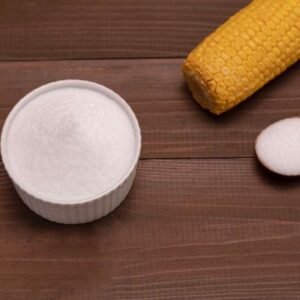
More Magnesium -- Are Any Other Forms a Good Choice?
Whoa!
We hit a rich vein when we wrote about magnesium last week. (I’m trying to use a mining metaphor… because we’re talking about a mineral… eh? No good?) Anyway…
Readers weighed in… asked questions… and demanded answers… so we’re back to make this whole magnesium thing a little less murky.
There are so many different forms because “pure magnesium” isn’t available — it has to be attached to something. It can be attached to a salt or chelated (attached) to an amino acid.
If your magnesium product doesn’t list the form it’s in, then they haven’t properly labeled the product.
So let’s get started.
Magnesium Oxide/Citrate Combos: The issue with magnesium combo products is that you can’t know exactly how much of each form you’re getting. Out of a 300 mg dose of magnesium, it could be 290 mg oxide and 10 mg citrate. You don’t necessarily have to toss this product, but once you run out, I’d switch to a different brand with no oxide form.
Laxative Effect of the Citrate Form: Some readers commented that the citrate form can have a laxative effect, which is true.
The cool thing about this is that it gives you a good way to judge how much magnesium you need. Once you experience a laxative effect, you know you’ve reached your threshold and should reduce your dose a bit.
(Nate Rifkin: Sounds like a plan! I’ll find out!)
Keep us posted, Nate! Or… wait. Don’t. Anyway…
If the citrate form gives you any sort of stomach discomfort, I’d try one of the other forms of magnesium below.
Magnesium L-Threonate: This is a newer form of magnesium that may have potential brain benefits. A couple animal studies show it enhances memory and learning by increasing the density of synapses in the brain.
Though I couldn’t get the full to study to verify this, according to Life Extension magazine, mag L-threonate was shown in a rat study to boost brain magnesium by about 15%, which none of the other forms of magnesium tested could do.
If you’re looking for a potential brain-booster, there’s no harm in trying this form.
Magnesium Malate: This is magnesium combined with malic acid. One rat study showed this form to be more effective at reversing a magnesium deficit compared with other forms.
In theory, it may help boost energy, because malic acid is involved in energy production. Two studies have shown a combination of magnesium and malic acid to help reduce muscle tenderness in fibromyalgia sufferers.
Magnesium Taurate: This is magnesium chelated to taurine. Taurine has shown blood pressure-lowering and anti-atherosclerotic (anti- hardening of the arteries) effects, so this form is worth trying if you have cardiovascular concerns.
Magnesium Glycinate: One study has shown this form to be better absorbed than mag oxide, at least in some people. I didn’t find many studies on this form in PubMed, but it’s anecdotally touted to be one gentler forms of magnesium.
Topical Magnesium/Magnesium Chloride: Mag chloride is commonly found in topical magnesium products. If you’ve ever taken an Epsom salt bath, you’ve experienced the benefits of topical magnesium.
There aren’t a whole lot of studies out there on topical magnesium, but if you have a sensitive stomach, this is worth a try.
For pill forms of mag chloride, one human study showed it to be better absorbed than mag oxide, and on par with mag aspartate and mag lactate, two other absorbable forms of magnesium.
Magnesium Stearate: This is actually a common “filler” in many supplements because it helps the other ingredients blend together better. It doesn’t give you any measurable dose of magnesium that’s going to have a beneficial effect.
There’s some debate as to whether this ingredient is safe, and I’ve read opposing viewpoints on it. If you can find products without it, that’s great, but I’m not yet convinced it’s harmful in the amounts common in most supplements.
***
To summarize, any form of magnesium other than mag oxide (and mag stearate) is a good option. If you have a specific health concern you’re trying to address, one of the above options might be a better choice than others.
The important thing is to find a form that works best for you and to take it consistently.
I personally take the mag citrate form, and it has completely eliminated the painful leg and foot cramps I used to get at night. It’s relatively inexpensive compared with some of the other forms out there, so it’s good form to start with and see if it works for you.
To living well daily,
Jasmine LeMaster
Health Researcher
Sources:
Novel Magnesium Compound Reverses Neurodegeneration Life Extension Magazine. Feb 2012.
Abraham, G. Management of Fibromyalgia: Rationale for the Use of Magnesium and Malic Acid. J Nutr. and Environmental Medicine. 1992 Vol. 3, No. 1 , Pages 49-59.
Russell I.J. et al. Treatment of fibromyalgia syndrome with Super Malic: a randomized, double blind, placebo controlled, crossover pilot study. J Rheumatol. 1995 May;22(5):953-8.
Schuette S.A. et al. Bioavailability of magnesium diglycinate vs magnesium oxide in patients with ileal resection. JPEN J Parenter Enteral Nutr. 1994 Sep-Oct;18(5):430-5.
View More Free Articles
Stop Obsessing Over Diet Trends
Can we stop with the endless diet debates already? Every other week there’s a new headline shouting about which diet is best for weight loss, heart health, or diabetes. Paleo, keto, low-carb, high-protein… it’s exhausting. And now, a new meta-analysis is out comparing the Mediterranean diet, the DASH diet, and something called AHEI (that’s “Alternative...
A New Reason to Ditch Processed Junk
If you’ve ever walked the inside aisles of your local grocery store and thought, “This is all just junk,” your instincts were spot on. A new study published in the journal Thorax just added another red flag to the list of dangers linked to ultra-processed food—a 41 percent higher risk of lung cancer. That’s right....
When Being Winded on Stairs Is Serious (And When It Isn’t)
I had an athlete visit me recently because he experienced shortness of breath while climbing stairs. He is in great shape, so he was worried about what it might mean. “Doc,” he said, “I run five miles three times a week. Why am I huffing and puffing after two flights of stairs?” His concern is...
Study EXPOSES Hidden Danger Lurking in Your Car
We think of our homes and cars as safe havens. But according to a startling new study, they may be flooding your lungs with microscopic plastic particles—every single day. Researchers in France recently found that adults inhale an average of 68,000 microplastic particles daily from indoor air alone. To put that in perspective, that’s about...
Mailbag: Is Modern Food Making You Snore?
“What can cause snoring, and is there a way to correct this issue?” —Seeking Silence Hi Seeking, Snoring happens when the soft tissues in your throat relax and vibrate as air passes through during sleep. While several factors can cause snoring—from sleep position to nasal congestion—I want to share one trigger that might surprise you....
Simple Food Swap SLASHES Dementia Risk 28%
Let’s be honest… who would jump at the chance to cut their dementia risk by 28 percent. And no, you don’t need to run marathons, survive on broccoli, or learn to play the zither (whatever that is) to make it happen. All it takes is one easy swap—something that’s probably already in your refrigerator. Researchers...
This SMART Floss Exposes Hidden Health Danger
Scientists have created dental floss that doesn’t just clean between your teeth—it also tracks your stress while you’re flossing. Now, I know what you’re thinking… “Great—now even flossing is going to stress me out by telling me how stressed I am.” But this fascinating new tool from Tufts University could be a game-changer for understanding...
Is This "Safe" Sweetener Damaging Your Brain?
The headlines are alarming… “Popular Sugar Substitute Linked to Brain Cell Damage” and “Erythritol Could Damage Critical Brain Barrier” are just two of the dozens I’ve spotted recently. But before you toss every sugar-free product in your pantry, let’s take a closer look at what this study actually shows—and what it doesn’t. The latest research...
This Summer Threat Could SPIKE Your Blood Sugar
Picture this… It’s another scorching hot summer day. You crank up the air conditioning while watching the weather forecast, which predicts yet another “record-breaking” heat wave. It’s starting to feel like just another miserably uncomfortable summer. But what you might not realize is that—if you have diabetes—those rising temps could do far more damage to...
Move Over Yogurt—5 Foods That Pack MORE Probiotics
Let’s talk about your gut. The microbiome is the collection of trillions of bacteria and other tiny organisms that live in and on your body—especially in your gut—and help keep you healthy. I’ve written often about how vital it is to maintain a healthy microbiome. And you might have dutifully added yogurt to your shopping...









